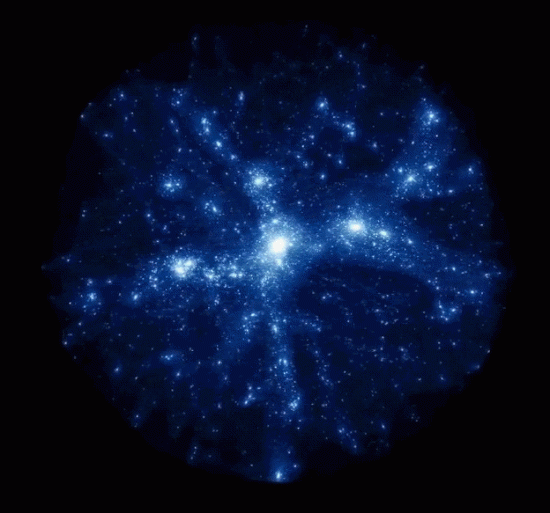Jul 27, 2012
Dark matter is in the news.
“Plasma phenomena are scalable. Their electrical and physical properties remain the same, independent of the size of the plasma.”
— Donald Scott, author of The Electric Sky
Plasma in space usually appears as a cloud of partially charged gas and dust. When clouds are in motion they become ionized. Clouds in relative motion induce electric currents within them. The currents generate magnetic fields that confine the plasma into coherent filaments known as Birkeland currents. The charged particles in the currents spiral along the resulting magnetic fields, appearing as electrical vortices. The forces between these spinning Birkeland currents pull them close together and wind them around each other into “plasma ropes”.
Birkeland currents squeeze galactic plasma into thin filaments that remain collimated over great distances. Light-years-long jets and so-called “radio lobes” can extend for many times a galaxy’s diameter, for example. A circuit is induced within any one galaxy that causes diffuse electric charge to flow from the galactic poles toward the galaxy’s equatorial plane and spiral into its nucleus.
The forces exerted by electrified plasma contained in the twisting filaments of Birkeland currents dominate the Universe. They circulate in a cosmic circuit that flows into our field of view and then out into the void with electromagnetic attraction between them that is billions of times more intense than gravity.
No doubt the universe is larger than what we can observe at this moment because more sensitive tools have continued to reveal greater depths. Out of those depths rise electrical explanations far superior to the centuries-old hypotheses conceived in a time when none of today’s observations were possible.
According to a recent press release, after Japanese scientists analyzed data from millions of galactic observations, the distribution of so-called “dark matter” throughout the Universe has been mapped. Computer simulations played the dominant role.
Indeed, computer simulations are all that is available to astrophysicists when it comes to dark matter. Minute differences in the models of some galaxies lead them to claim that unseen conglomerations of matter are “bending” space in a phenomenon called “gravitational lensing”. It is that lens effect that holds their hypothesis together. The intense gravity generated by the concentrations of invisible (or “dark”) matter is said to cause light rays from remote objects to bend as if seen through a lens. However, it is a “weak gravitational lensing” effect, so the slight variations can only be identified statistically.
As the press release states, Masataka Fukugita, Naoki Yoshida, and Shogo Masaki “…used very large computer simulations of cosmic structure formation to unfold various contributions to the projected [dark] matter distribution.”
Their mathematical inference is that only 4.5% of the matter in the Universe is normal or “baryonic” matter, while 22% is dark matter. It is often written in the popular press that dark matter makes up a significantly larger percentage of the Universe than normal matter. Accompanying that statement is usually a claim that “dark energy” makes up “75% of the rest of the Universe.” To anyone familiar with plasma physics, it is well known that plasma makes up 99.99% of the Universe. It is a fascinating convergence that the amount of gravitational mass invented to save conventional theories is the same as the ionized plasma that is overlooked.
Stephen Smith













